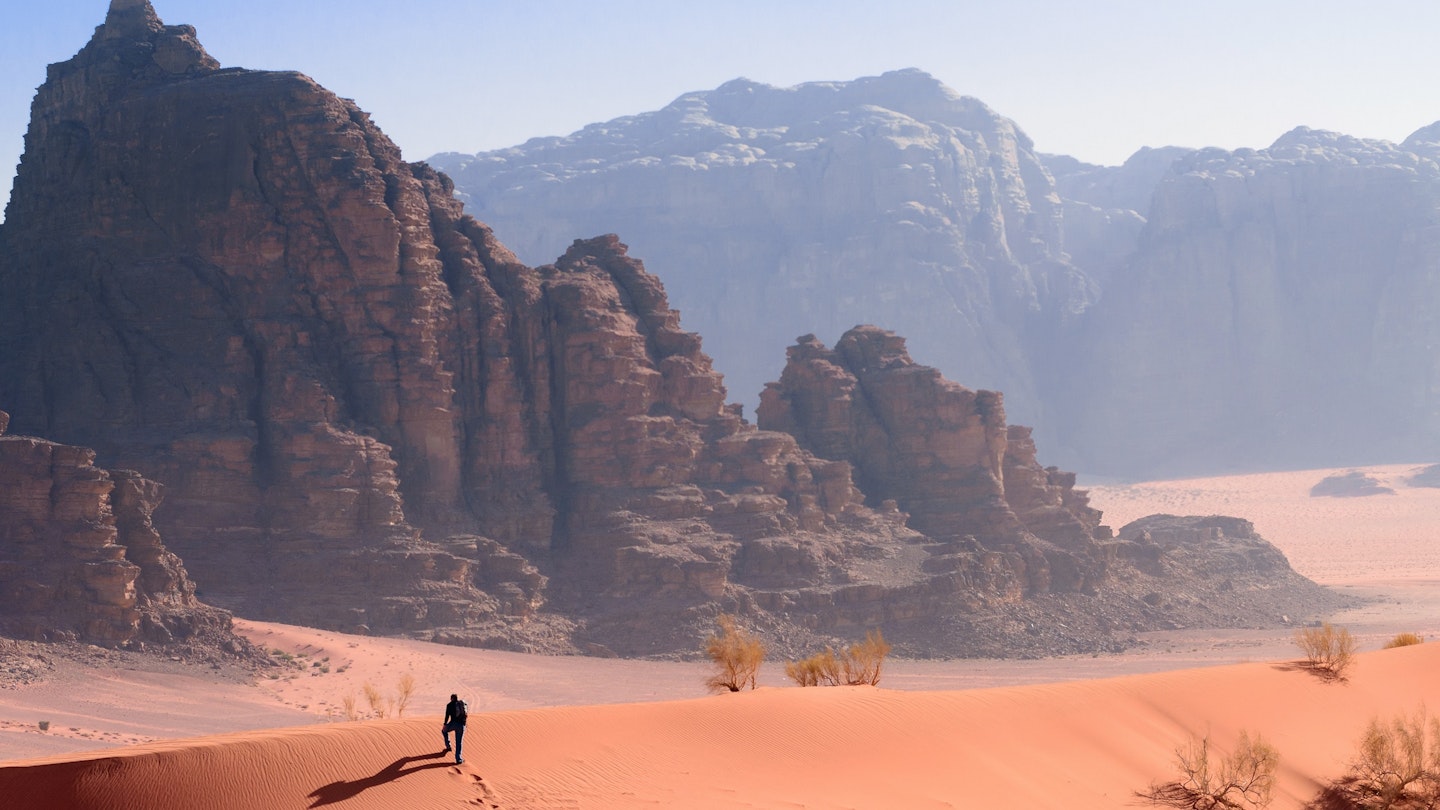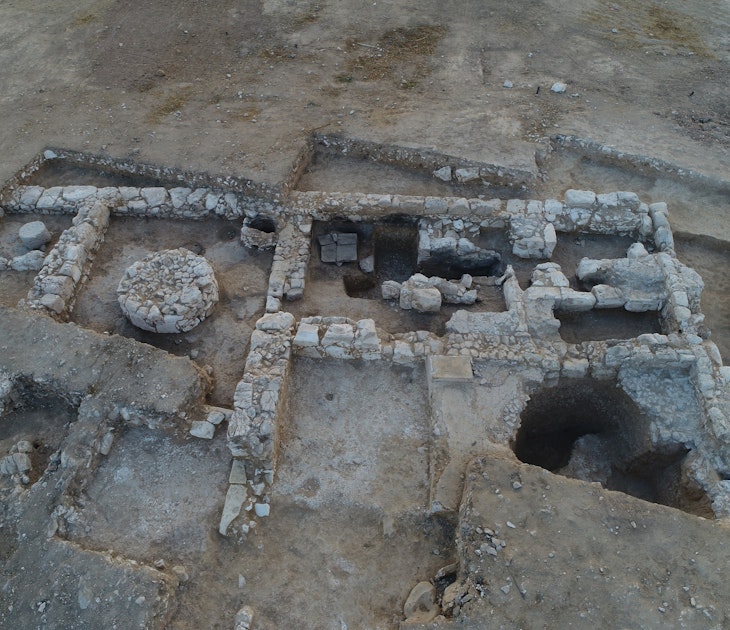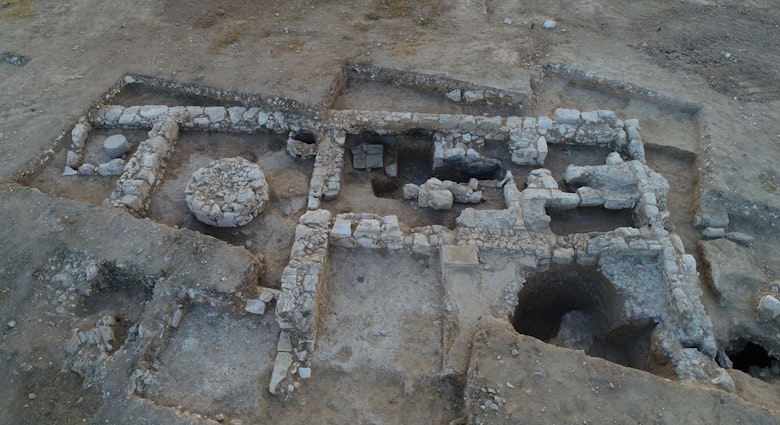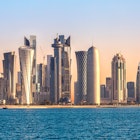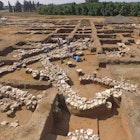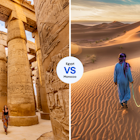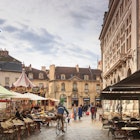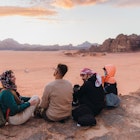In 1972, my grandfather travelled to Jordan for work and ended up falling in love with the country and its people, documenting his time with a series of incredible photographs. Some 47 years later in September 2019, I ventured to Jordan armed with his printed 1970s slides, a whole lot of excitement and a smidge of trepidation, to see how Jordan has changed.

An immediate similarity with our trips was the fluctuating security situation in the Middle East. Back then Jordan wasn’t long out of Black September, and there were also great tensions between Israel, Syria and Lebanon. Today, conflict exists in Syria and Iraq, and temperatures are rising in Iran’s relationship with the West. Yet, then and now, we both found a place of peace within Jordan’s borders. It was one of the safest countries I have ever visited and, like my Grandpa, I fell in love: it would be impossible not to.
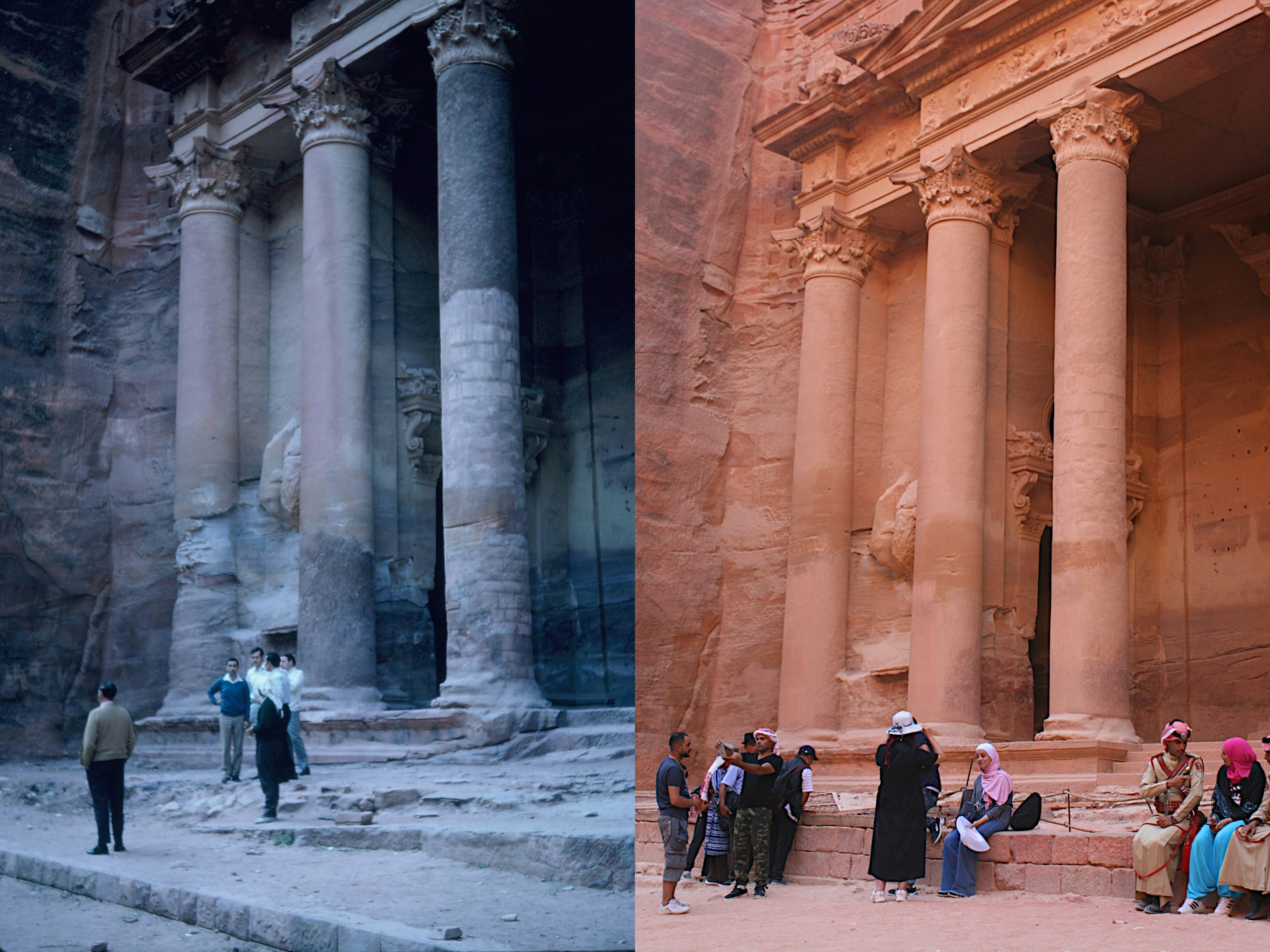
Petra: the Treasury
When Grandpa visited in 1972, his group of British workmates were the only tourists in Petra. They were welcomed in by Bedouins who called the site home, having lived in the caves peppering Petra’s 102-square-mile radius for hundreds upon hundreds of years. These Bedouins were said to be the descendants of the Nabateans, the people who carved this overwhelmingly ornate ancient city from the rocky canyons.
Related content: How to be a responsible traveller in Petra
As sunrise dawned over Wadi Musa on the sixth day of my trip to Jordan, I walked into Petra not yet fully understanding the wonders awaiting me. Watching the Treasury appear from behind the sunset-hued sandstone at the end of the Siq canyon is a sight which simply can’t be put into words. And while the magic of that first glimpse will surely never change, I was disappointed to find that you can no longer go inside the carved rock buildings as my Grandpa did. Because we arrived at the site shortly after sunrise, we got to experience what I imagine is Petra at its quietest (but we were still far from alone). In the afternoon, on our return to Wadi Musa after a full day of hiking through the orange dust, we passed back towards the Siq and I was shocked to find gaggles of tourists sitting on the edge of the Treasury, with more being sped down from Wadi Musa on horse and carts. The Treasury itself was still unfathomably magical, but to see it with only the company of Bedouin residents 50 years ago must have truly been something else.
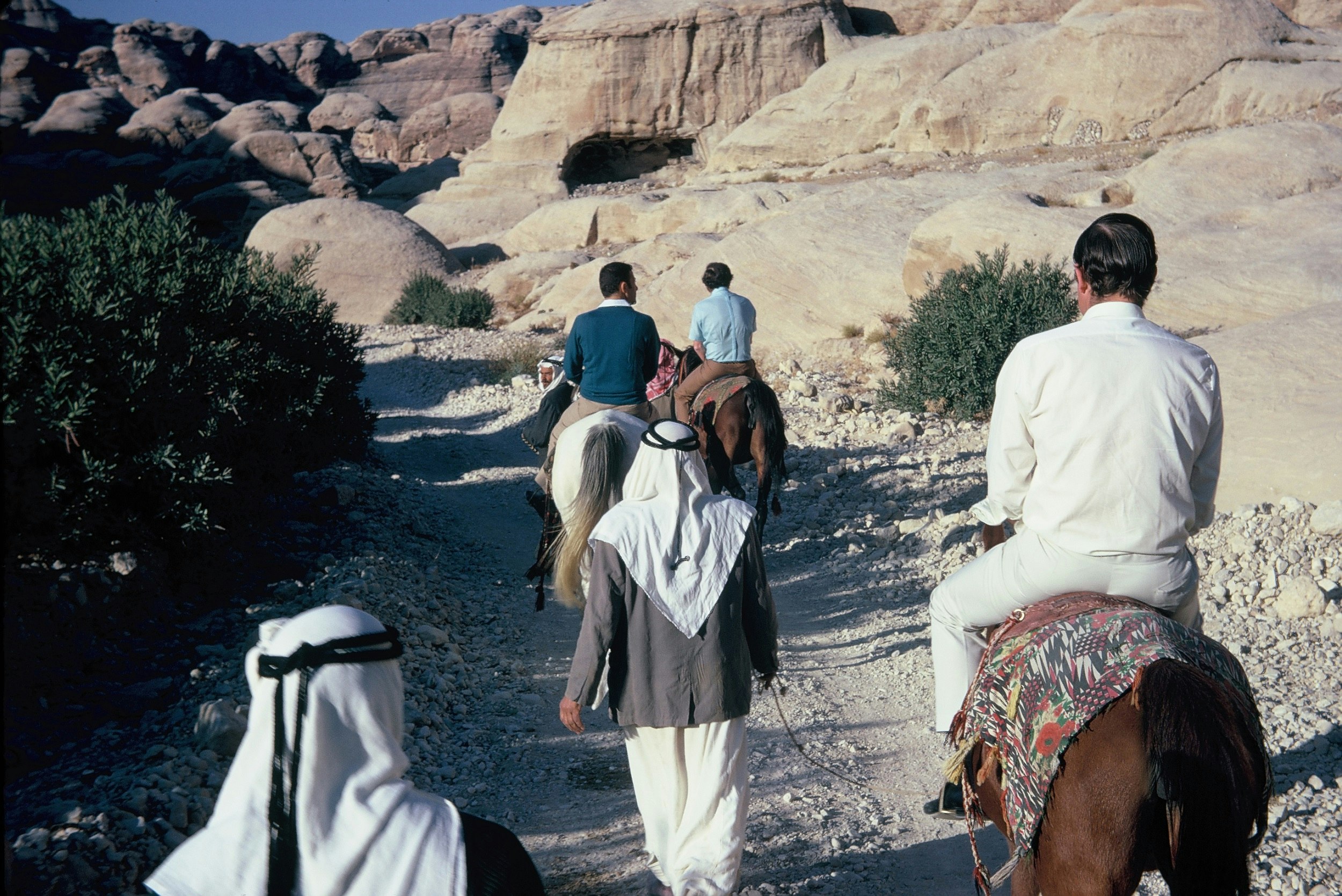
Petra: a home gone, a Unesco Site born
In 1985, Petra became a UNESCO World Heritage Site and the Petra Regional Authority relocated its Bedouin residents, predominating made up of Bdoul tribe members, to a village roughly two miles away called Umm Sayhoun. A visit to Petra in 1972 was a visit to someone’s home; to a city, not a tourist hub. There were no Bedouins selling souvenirs and crafts, none offering donkey rides up to the Monastery or horse-and-carriage rides down the Siq, and while Petra seems to have been well-preserved, the impact of tourism is undeniable. My Grandpa paid nothing to enter Petra and wandered through it almost alone, but there was never a moment in the day when I could find quiet enjoyment of the wonders without being interrupted by fellow, camera-laden visitors or souvenir sellers peddling their wares. A once nomadic community of tribes who settled in Petra’s caves, their lives are now focused on catering to tourists – it’s their main source of income – thanks to the government agreement that only Bedouins can work in Petra. 50 years ago, the Petra Bedouins lived the life of their ancestors, now they spend their days selling postcards to tourists.

Petra: the Monastery
My climb up to the Monastery was broken up by stops to sip on fridge-cooled cans of Fanta and for conversations with locals trying to sell us scarves and magnets. My Grandpa’s was wildly different, a slow, uphill slog through the empty canyon, on steps not yet worn into footholds by tourist feet and donkey hooves. Grandpa reached the summit and marvelled at the Monastery in complete silence, in awe of feeling like he’d stepped back in time. When we finished our climb there was a restaurant waiting for us, serving invigorating Turkish cardamom coffee and cheese sandwiches. Petra was absolutely magical, but what I wouldn’t give to have experienced it as my Grandpa did, in complete tranquility.

Wadi Rum: all sand and starry skies
A similar story continues in Wadi Rum, though at almost 450 square miles, it is unsurprising you can still enjoy unparalleled peace and quiet here. In 1972, Grandpa ventured into Wadi Rum with his workmates and Jordanian friends in an ill-purposed vehicle, which resulted in them spending countless hours pulling their car out of sand rifts every time it got stuck. Not to mention it was Ramadan, so they abandoned their adventure in favour of finding somewhere their Jordanian friends could break their fast – not an easy feat. There were no roads then, but today tarmac guides you into Wadi Rum village, where you can stock up on snacks and bottled water before heading out on specially-built jeeps into the depths of the desert. Bedouin life here is centred around tourism, too, but in contrast to Petra, its vast size means nomadic life still persists. It would be entirely possible for tribes to live in the wilderness, but many instead focus on eco-adventure tourism in the form of climbing and hiking. Numerous Bedouin also work in desert camps where tourists come to spend magical nights under the star-speckled skies, or operate caravans of camels on which tourists can meander through the surrounds in true Lawrence of Arabia style.
Related content: A practical guide to visiting Jordan during Ramadan
On my exhilarating jeep tour, we stopped for sage tea at a tent way out into the wadi, and even there these isolated Bedouins had a small selection of souvenirs for sale. At its current level, tourism in Wadi Rum might even be a good thing: camel rides and desert camps are bringing money to those who may not have other ways to provide for themselves in what is a money-driven world that no longer caters to the nomadic life. The development of this area of Jordan has allowed both locals and tourists to enjoy it; my Wadi Rum experience was entirely other-worldly, with me sleeping under the stars and eating traditional food cooked underneath the sand. I managed to explore with ease, yet without the feeling that we were disrupting something that should have been, but no longer was. My Grandpa’s experience was certainly different. It wasn’t easy for him to enjoy the desert; transport was difficult and supplies were scarce in this true remoteness.

Aqaba: Of all the beach resorts in all the world
In 1972 Aqaba was little more than a small coastal town with unpaved roads, one or two beach houses and a host of fishermen bobbing about on small boats in the harbour. My Grandpa encountered no other tourists, and the only excitement they experienced here was watching the filming of an Italian romance movie while eating fresh-off-the-boat seafood. Nowadays, Aqaba is the most modern, Westernised part of Jordan by a landslide. Dusty track roads have been replaced with hundreds of tarmacked streets, and the beaches are filled with sunbathing tourists. Five-star resorts rub shoulders with McDonalds and Popeyes restaurants, swanky beach clubs, dive centres and even liquor stores. Driving into Aqaba, with all its glittering tower blocks and faux palm tree-covered roundabouts, after spending a night in Wadi Rum was a shock to the senses. It feels overpopulated and loud, but not in the same way the capital Amman does. Amman is a rush; car horns and locals shouting, a place where Middle Eastern Muslim modesty is valued and where everything is centred around the locals, not tourists. Aqaba feels like it could be any other beach resort, anywhere in the world.
Related content: Where to find the best scuba diving sites in the Middle East
Given that it is the country’s only port and beach destination (save for the Dead Sea), it’s unsurprising that tourism has increased fiftyfold here. With the wonders of the Red Sea a stone’s throw away, there’s still plenty of reason to visit – I went diving inside a sunken fighter jet 15m under the surface. But it does lack the Jordanian sparkle my Grandpa says it had when he visited, and the Jordanian vibe I fell in love with in every other town.

Jordanians: the beating heart of Jordan
Despite all that has changed in Jordan in the last 50 years, one thing that hasn’t changed is the overwhelming hospitality of its people. When Grandpa visited for work, he hadn’t even been intending to explore; the only reason he ventured out was because his Jordanian workmates insisted on taking them around the country. They even visited King Hussein’s stables and met Princess (later Queen) Alia, simply because his colleague casually mentioned he’d like to see the King’s horses. It was thanks to the unparalleled friendliness of the Jordanians that he experienced such incredible things. In Jordan, you need to be spontaneous, flexible and open to a change of plans, because unexpected offers come out of nowhere. From the moment I landed, I was pleasantly taken aback by the friendliness of Jordanians; the police helped my taxi driver find the Airbnb, the tourist policemen gave me a photoshoot, and two maintenance personnel working on the roof of my apartment building even insisted we all share breakfast when I went up to the terrace. A woman I sat next to at lunch even apologised profusely that she couldn’t invite me to her house for dinner that evening because she had a flight the next day. Then there was my tour driver who insisted that next time I was in Jordan, I must say with his family. Elsewhere, this would be an empty offer, but here he really meant it.
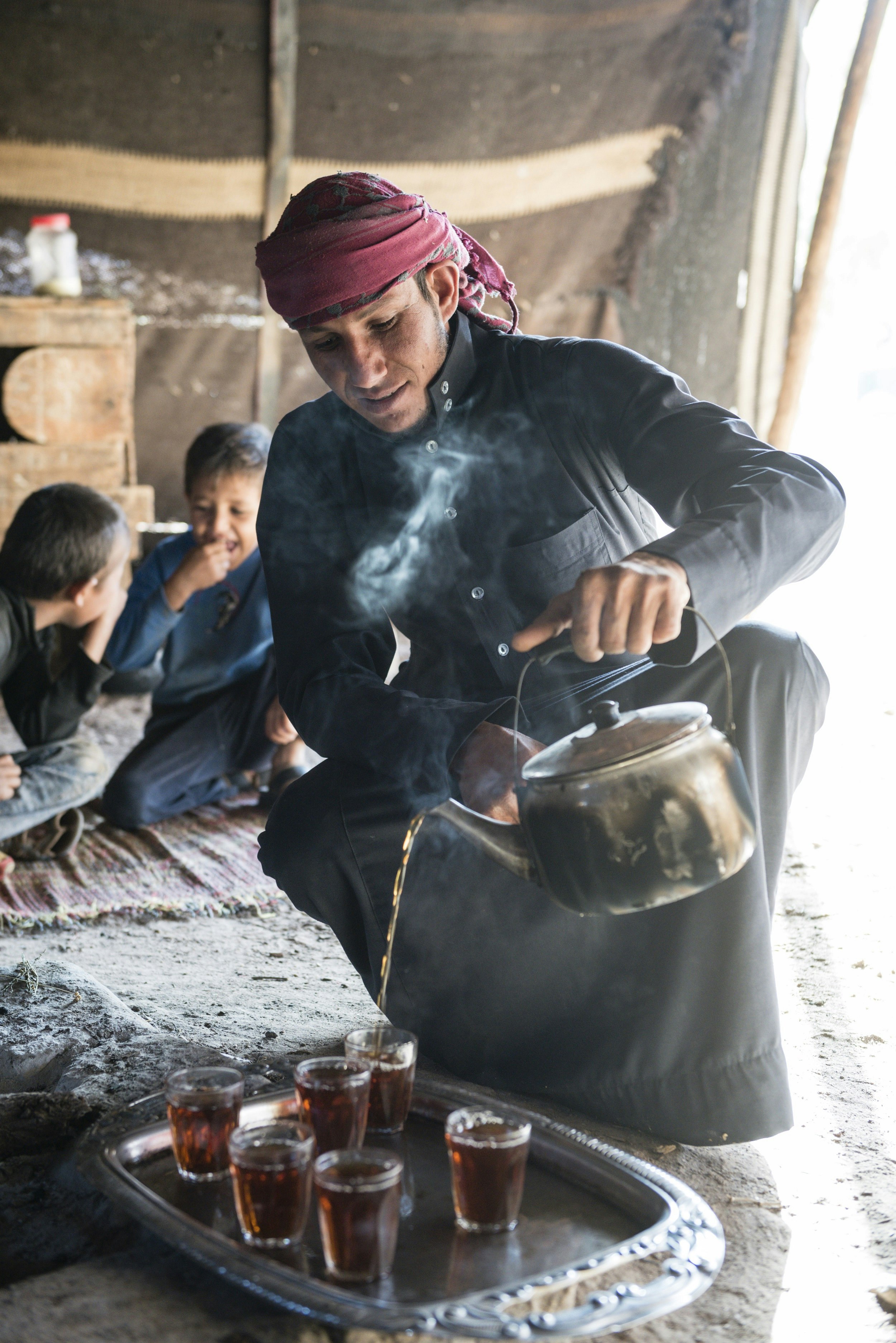
No matter how much tourism changes Jordan, I believe its people will still maintain the same kindness and generosity they always have, and this is the true takeaway – Jordan is a magical country with other-worldly landscapes, phenomenal food and a wonder of the world to rival all others, but Jordanians are what makes Jordan truly special.
